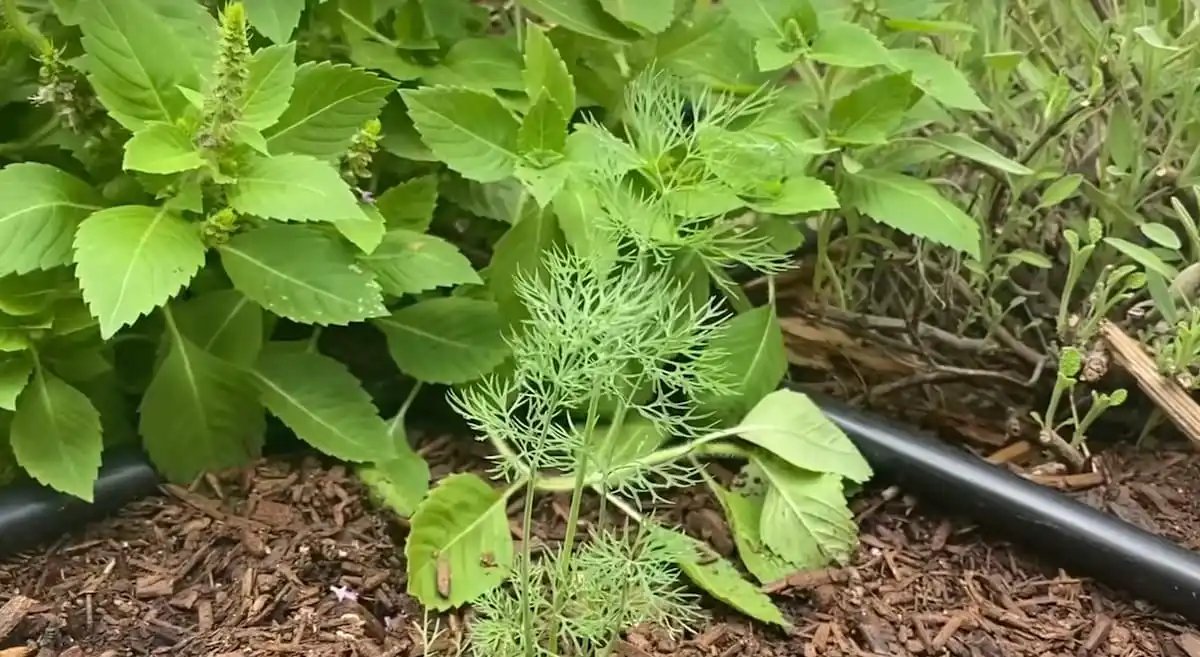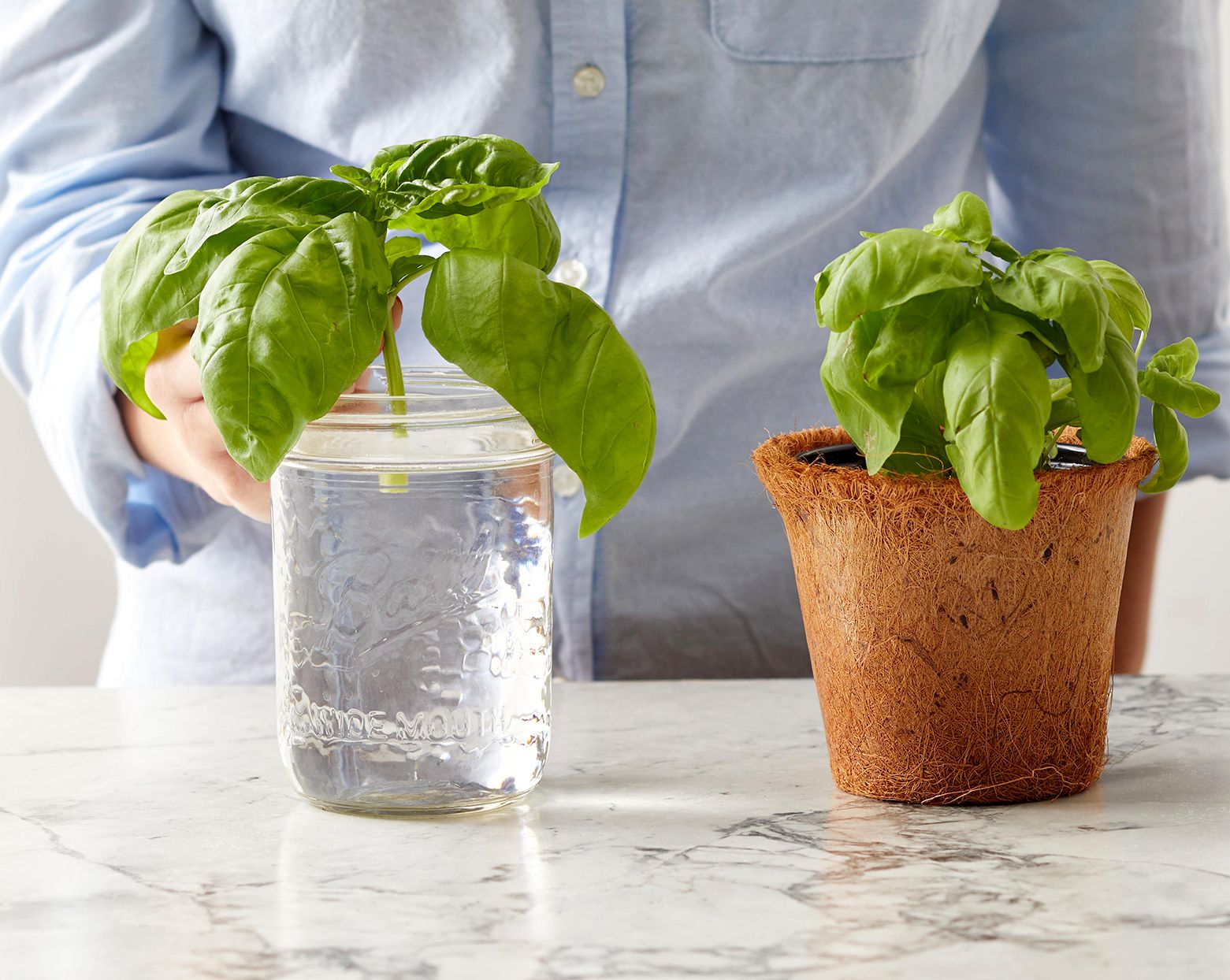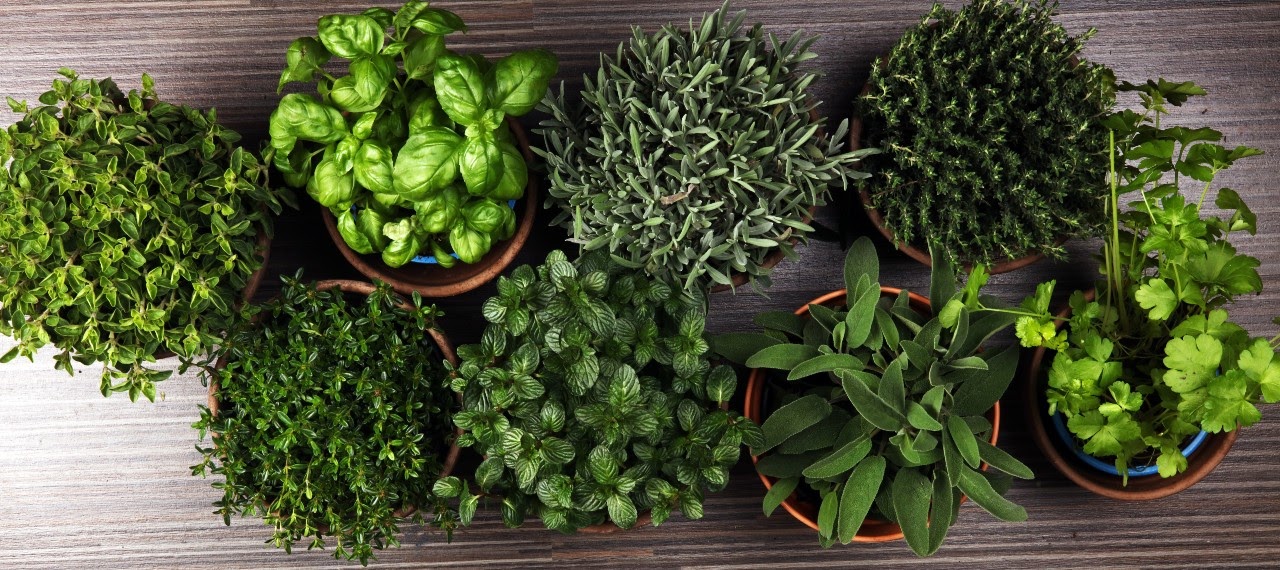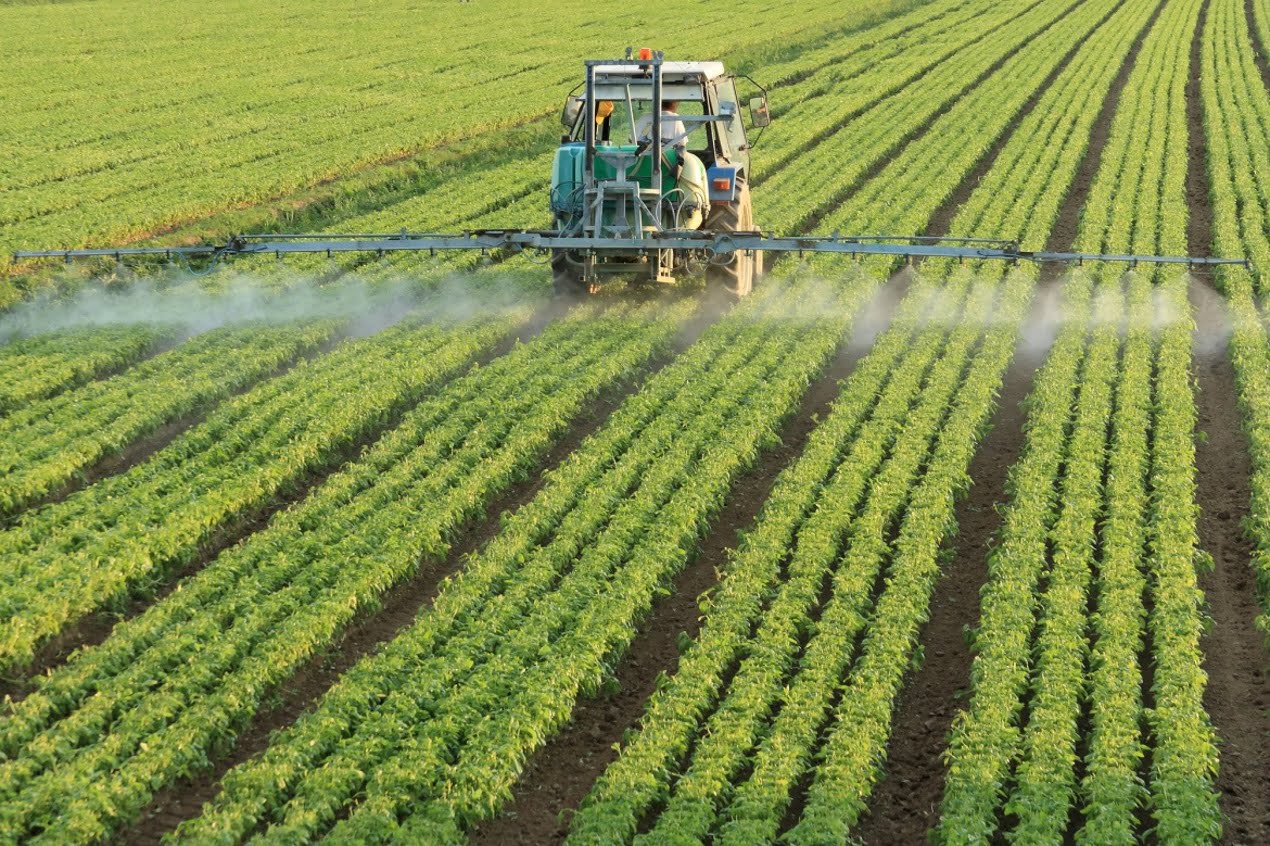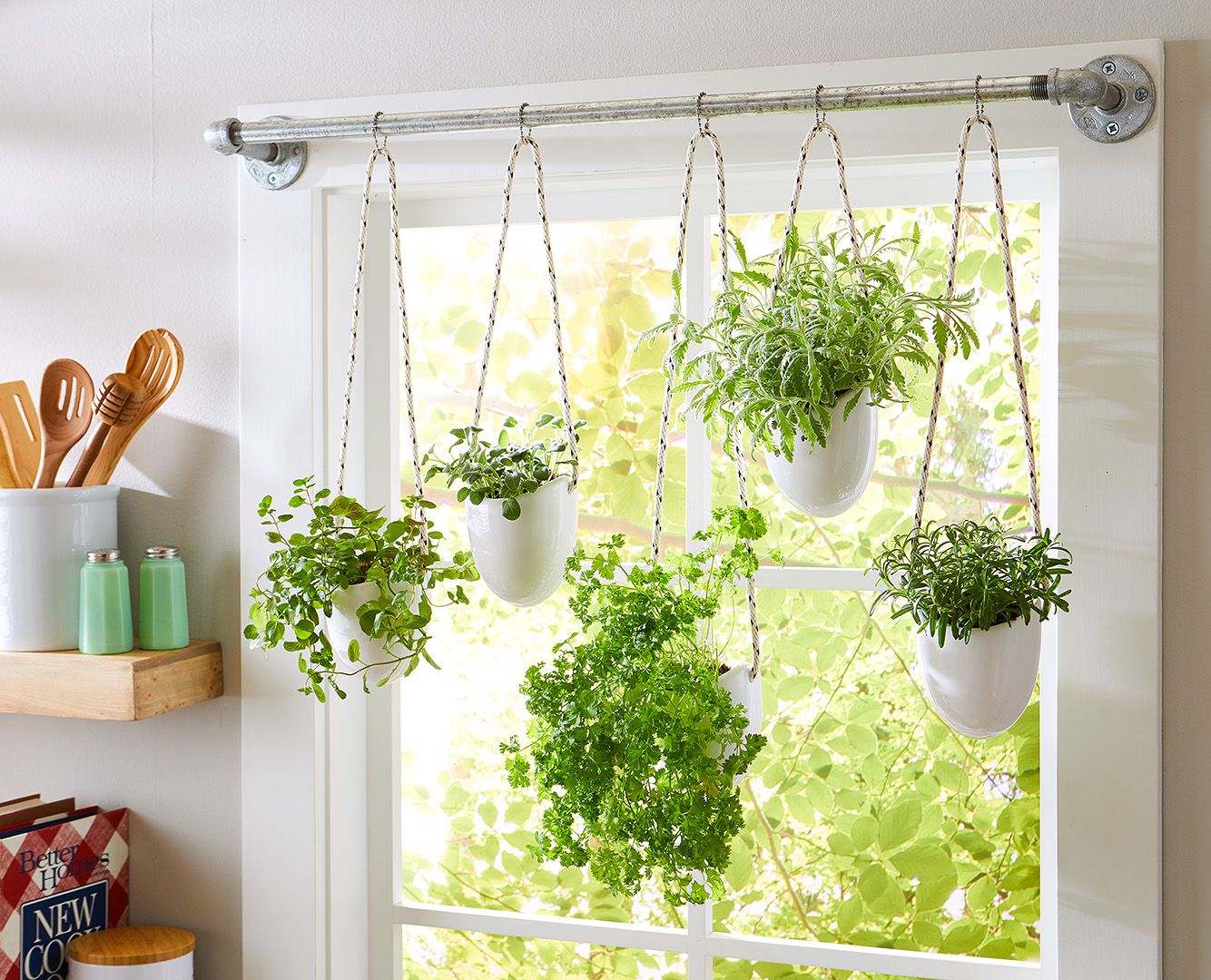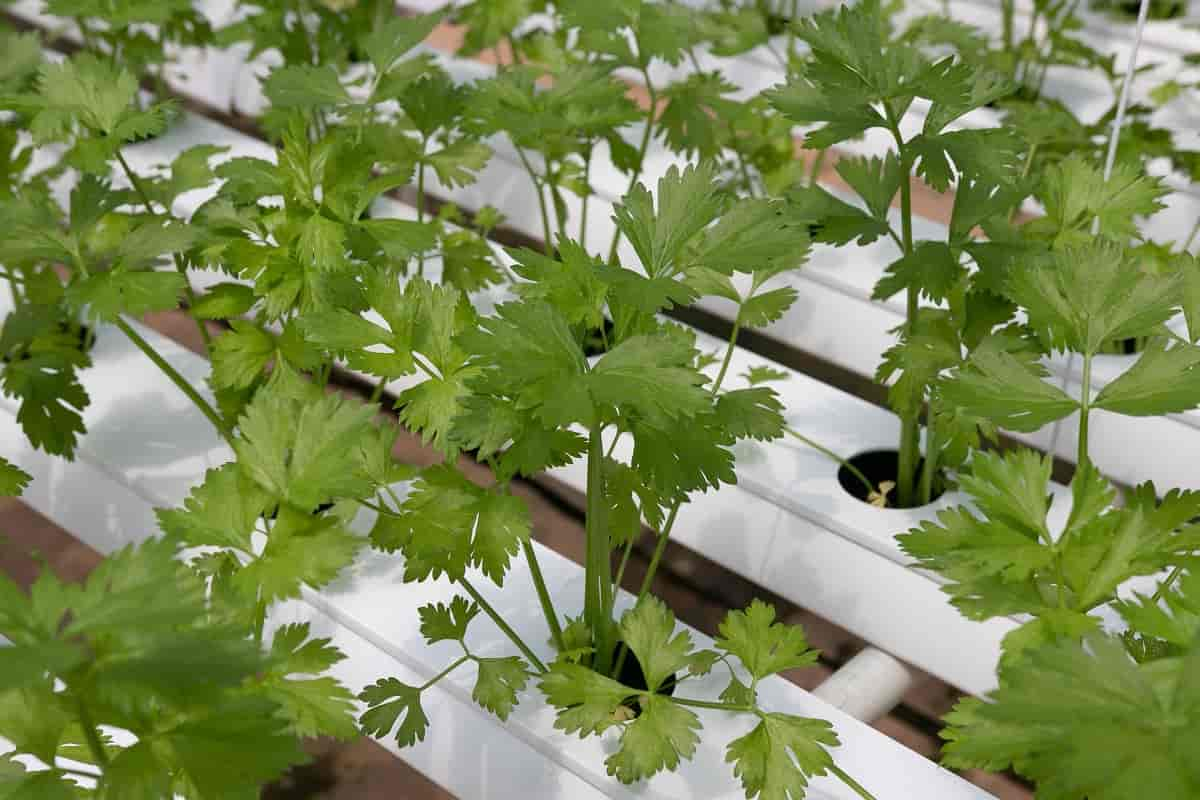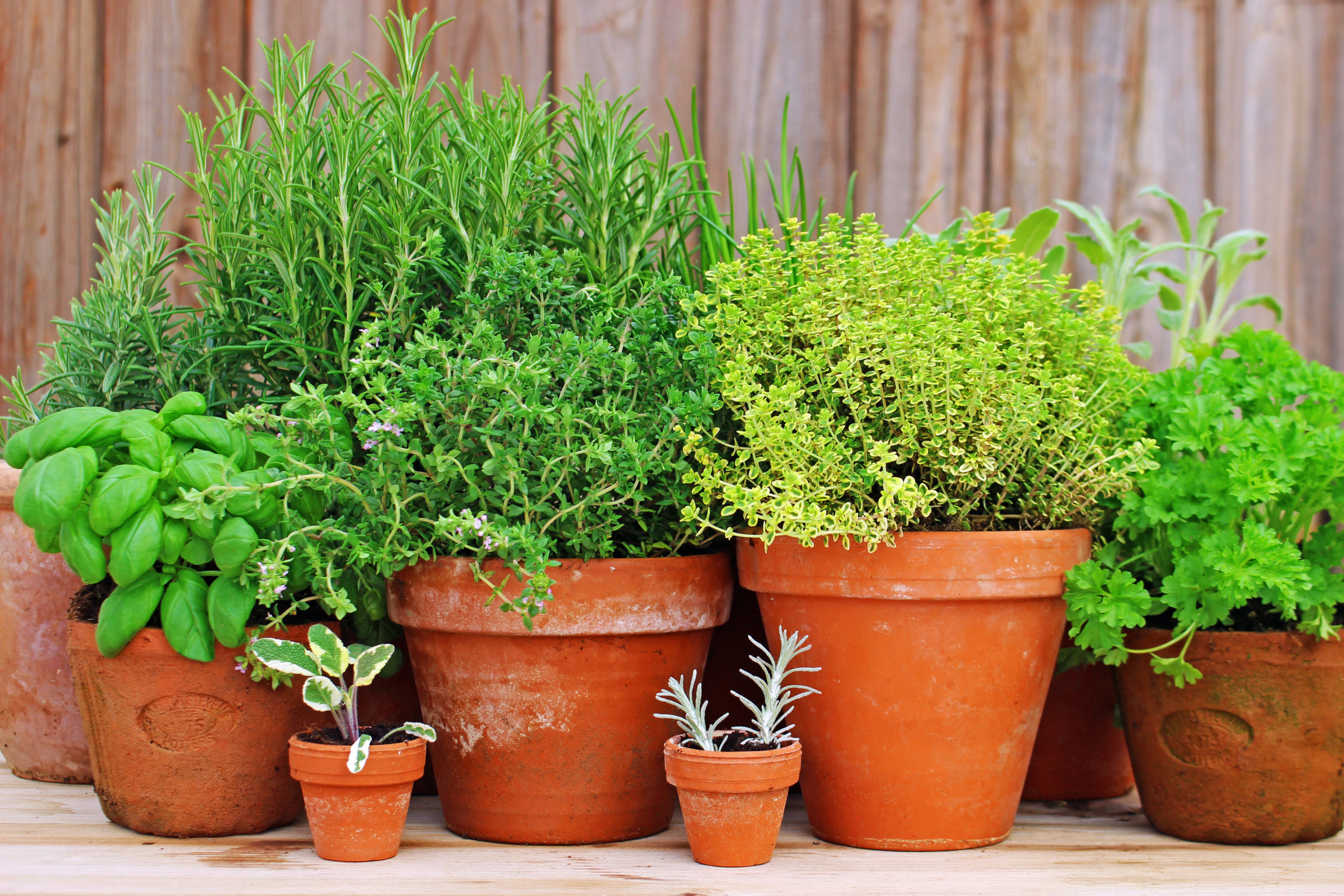Home>Gardening News and Trends>Gardening Trends>What Herbs Grow Back Every Year
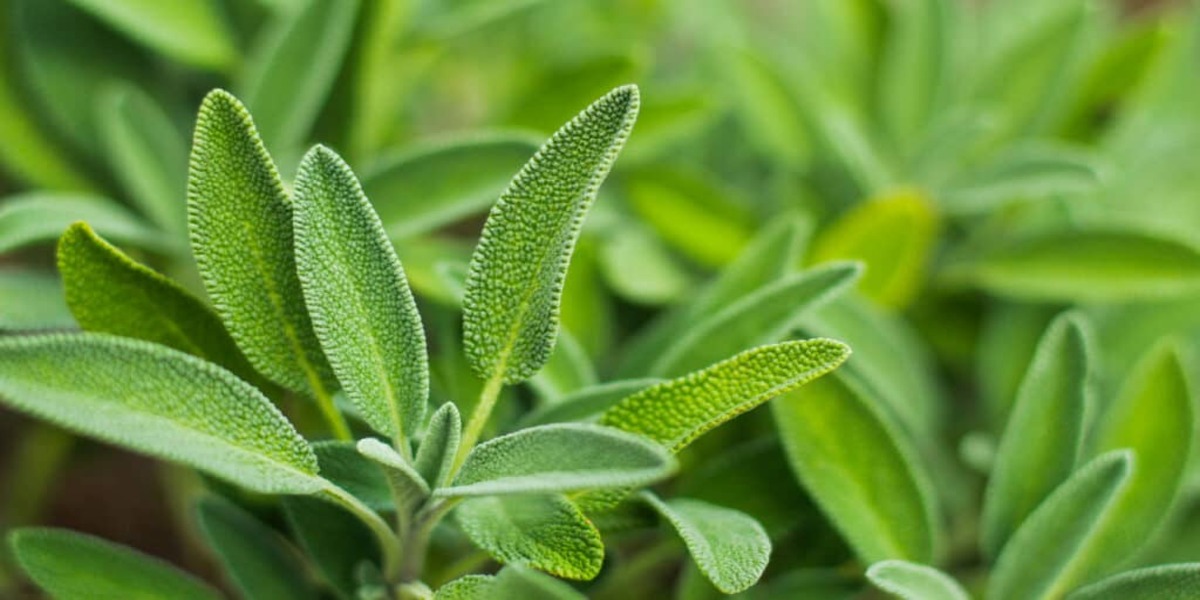

Gardening Trends
What Herbs Grow Back Every Year
Modified: February 8, 2024
Discover the latest gardening trends and learn about herbs that come back year after year. Enhance your garden with these perennial herbs!
(Many of the links in this article redirect to a specific reviewed product. Your purchase of these products through affiliate links helps to generate commission for Chicagolandgardening.com, at no extra cost. Learn more)
Table of Contents
Introduction
Welcome to the world of gardening, where nature and creativity converge to create beautiful and bountiful landscapes. Whether you have a sprawling backyard or a small balcony, gardening offers a fulfilling and therapeutic experience. As trends in gardening continue to evolve, one aspect that has gained immense popularity is growing perennial herbs.
Perennial herbs are a fantastic addition to any garden for a multitude of reasons. Unlike annual herbs, which need to be replanted every year, perennial herbs have the remarkable ability to regrow year after year, making them a cost-effective and time-saving choice. Not only do they provide a reliable source of fresh herbs throughout the seasons, but they also add a touch of greenery and fragrance to your outdoor space.
Whether you are a seasoned gardener or just starting out, incorporating perennial herbs into your garden is a wise decision. In this article, we will explore some of the top perennial herbs that you can cultivate in your garden, along with tips on how to plant and maintain them. So, let’s dive in and discover the wonders of these resilient and rewarding plants.
Reasons to Grow Perennial Herbs
There are several compelling reasons why growing perennial herbs in your garden is a great choice. Let’s explore some of these reasons:
- Continuous Availability: One of the primary benefits of growing perennial herbs is that they provide a continuous supply of fresh herbs throughout the year. Unlike annual herbs that need to be replanted each season, perennial herbs establish deep root systems and survive through multiple seasons, allowing you to have access to fresh herbs whenever you need them.
- Cost-Effective: Investing in perennial herbs can save you money in the long run. Since they regrow every year, you don’t have to spend money on buying new plants or seeds annually. Once established, perennial herbs require minimal maintenance, making them a cost-effective addition to your garden.
- Easier Maintenance: Perennial herbs are generally low-maintenance plants, requiring less attention compared to annual herbs. Once they are established in your garden, they are more tolerant to varying weather conditions and can handle periods of neglect. This makes them perfect for busy individuals who still want to enjoy the benefits of homegrown herbs.
- Environmental Benefits: Growing perennial herbs contributes to a more sustainable and eco-friendly gardening practice. Their deep root systems help prevent soil erosion, improve soil quality, and enhance overall garden biodiversity. Additionally, perennial herbs often attract beneficial insects and pollinators, promoting a healthier ecosystem in your garden.
- Ornamental Value: Perennial herbs not only serve practical purposes but also add visual appeal to your garden. Many of these herbs have beautiful flowers, unique foliage, or aromatic scents, making them an attractive addition to any landscape. They can be grown in containers, borders, or even as decorative focal points in your garden.
With their continuous availability, cost-effectiveness, easier maintenance, environmental benefits, and ornamental value, it’s no wonder that perennial herbs have become increasingly popular among gardening enthusiasts. Now, let’s explore some of the top perennial herbs that you can consider growing in your garden.
Top Perennial Herbs for Your Garden
When it comes to choosing perennial herbs for your garden, there is a wide range of options to consider. Each herb has its unique flavors, fragrances, and uses. Here are some top perennial herbs that you can grow and enjoy:
- Rosemary: This aromatic herb is known for its pine-like fragrance and versatile culinary uses. It thrives in well-drained soil and requires full sun. Rosemary is perfect for flavoring roasted meats, potatoes, and homemade bread.
- Thyme: Thyme is a popular herb with small, fragrant leaves that add a delightful touch to a variety of dishes. It prefers well-drained soil and can tolerate sunny or partially shaded areas. Thyme is ideal for seasoning soups, stews, and marinades.
- Sage: Known for its strong earthy flavor, sage is a staple in Mediterranean cuisine. It requires well-drained soil and plenty of sunlight. Sage leaves can be used fresh or dried to enhance the flavor of stuffings, sauces, and roasted vegetables.
- Mint: Mint is a refreshing herb that adds a burst of flavor to both sweet and savory dishes. It grows well in moist soil and thrives in partially shaded areas. Mint leaves can be used in beverages, salads, desserts, and as a garnish.
- Chives: Chives are a versatile herb with slender green leaves and a mild onion-like flavor. They prefer well-drained soil and plenty of sunlight. Chives can be used as a garnish, added to salads, soups, and dips, or blended into compound butters.
- Oregano: This herb is a favorite in Italian cuisine and adds a robust and aromatic flavor to dishes. It thrives in well-drained soil and full sun. Oregano leaves are perfect for seasoning tomato-based sauces, pizza, roasted vegetables, and grilled meats.
- Lavender: Lavender is not just a beautiful flower but also a versatile herb with a delightful fragrance. It requires well-drained soil and plenty of sunlight. Lavender can be used in teas, syrups, baked goods, and for aromatherapy purposes.
- Lemon Balm: With its lemony scent and flavor, lemon balm is a delightful addition to any garden. It prefers moist soil and partial shade. The leaves can be used to make tea, infused in syrups, or added to salads and desserts.
- Tarragon: Tarragon has a distinct anise-like flavor and is commonly used in French cuisine. It requires well-drained soil and full sun. Tarragon leaves can be used to flavor sauces, soups, egg dishes, and salads.
- Lemon Verbena: This herb has a strong lemony aroma and flavor that adds a refreshing twist to various dishes. It prefers well-drained soil and full sun. Lemon verbena leaves can be used to infuse beverages, desserts, and sauces.
These are just a few examples of the wide variety of perennial herbs available for your garden. Experiment with different herbs to discover your favorites and enjoy the fresh and unique flavors they bring to your culinary creations.
Rosemary
Rosemary is a perennial herb that is widely loved for its fragrant aroma and versatile culinary uses. This herb, with its needle-like leaves and woody stems, adds a delightful flavor to various dishes. Here are some key details about growing and using rosemary in your garden:
Planting: Rosemary thrives in well-drained soil and requires full sun exposure. It is best to plant rosemary in spring or early summer when the soil is warm. If you live in a colder climate, consider growing rosemary in containers that you can bring indoors during the winter months.
Care and Maintenance: Rosemary is a relatively low-maintenance herb. Once established, it is drought-tolerant and doesn’t require frequent watering. However, it is important to ensure that the soil is well-drained to prevent root rot. Prune rosemary regularly to keep it in shape and encourage bushier growth.
Culinary Uses: Rosemary is widely used in Mediterranean and Italian cuisines. Its intense pine-like aroma and earthy flavor make it a perfect herb for flavoring roasted meats, potatoes, and vegetables. You can also infuse rosemary in olive oil or vinegar to enhance the taste of dressings and marinades. Additionally, rosemary can be dried and used as a seasoning in various dishes.
Other Uses: Beyond the kitchen, rosemary has a long history of being used for its medicinal properties. It is believed to have antioxidant and anti-inflammatory effects and is often used in herbal remedies. Rosemary leaves can also be used to make fragrant potpourri or added to DIY beauty products like soaps and bath salts.
Companion Planting: Rosemary is known to repel certain pests, making it an excellent companion plant in your garden. It can deter pests like cabbage moths, carrot flies, and mosquitoes. Consider planting rosemary alongside vegetables like cabbage, carrots, beans, and tomatoes to help keep pests at bay.
Rosemary not only adds a wonderful aroma and flavor to your culinary creations but also serves as an attractive ornamental plant in your garden. Its evergreen foliage and delicate blue flowers make it a beautiful addition to borders, containers, or as a focal point in your herb garden.
Incorporating rosemary into your garden is a great way to enjoy the benefits of this versatile perennial herb. Whether you use it in your cooking, for its medicinal properties, or simply for its aesthetic appeal, rosemary is a must-have herb for any gardening enthusiast.
Thyme
Thyme is a versatile perennial herb known for its delightful fragrance and culinary uses. With its small, aromatic leaves and delicate flowers, thyme is a popular herb that adds a burst of flavor to a wide range of dishes. Here is everything you need to know about growing and utilizing thyme in your garden:
Planting: Thyme prefers well-drained soil and requires full sun exposure. It can tolerate various soil types, including sandy or rocky soil. You can start thyme from seeds or purchase young plants from a nursery. Plant them about 12 inches apart to allow room for spreading.
Care and Maintenance: Thyme is a relatively low-maintenance herb. It is drought-tolerant and doesn’t require excessive watering. However, make sure the soil doesn’t completely dry out. Prune thyme regularly to prevent it from becoming too woody and to encourage new growth. Trim the plant after flowering to promote denser foliage.
Culinary Uses: Thyme is a staple herb in many kitchens, particularly in Mediterranean and French cuisines. Its earthy, slightly minty flavor adds depth to various dishes, including soups, stews, sauces, roasted vegetables, and meat marinades. Thyme is often used fresh or dried, and its flavor becomes more pronounced when cooked.
Other Uses: Thyme is not only valued for its culinary contributions but also for its medicinal properties. It contains compounds that have antimicrobial and antioxidant properties, making it a popular ingredient in natural remedies and herbal teas. Thyme essential oil is also used in aromatherapy for its relaxing and soothing effects.
Companion Planting: Thyme is known to attract beneficial insects such as bees and butterflies, which can enhance pollination in your garden. It also repels some pests, including cabbage worms and whiteflies, making it a great companion for vegetables like cabbage, tomatoes, and eggplants. Consider interplanting thyme with these crops to deter pests and support pollinators.
Thyme is not only a flavorful herb but also a visually appealing addition to any garden. Its creeping growth habit and small flowers make it a great choice for borders, rock gardens, or as ground cover. Thyme also comes in different varieties, including lemon thyme, creeping thyme, and variegated thyme, offering a range of textures and scents to suit your preferences.
Whether you are an experienced cook or just starting to explore the culinary world, growing thyme in your garden will undoubtedly elevate your dishes with its distinct flavor and charm. With its easy cultivation, medicinal properties, and aesthetic appeal, thyme is a versatile herb that deserves a place in every herb garden.
Sage
Sage is a popular perennial herb known for its unique earthy flavor and aromatic leaves. With its beautiful gray-green foliage and delicate blooms, sage adds both culinary and ornamental value to any garden. Here’s everything you need to know about growing and utilizing sage:
Planting: Sage thrives in well-drained soil and requires full sun exposure. It is best to plant sage in the spring, after the last frost, or in the fall. You can start sage from seeds or obtain young plants from a nursery. When planting, maintain a distance of about 12 to 24 inches between each sage plant.
Care and Maintenance: Sage is a relatively low-maintenance herb. Once established, it is drought-tolerant and doesn’t require frequent watering. However, make sure the soil is well-drained to prevent root rot. Sage is a perennial shrub that benefits from regular pruning to maintain its shape and encourage new growth. Prune after flowering and in early spring to remove any dead or woody stems.
Culinary Uses: Sage is highly valued for its flavor and is a prominent herb in Mediterranean and Italian cuisines. Its slightly peppery, earthy taste pairs well with poultry, pork, and game meats. Sage leaves can be used fresh or dried to add depth to stuffing, sauces, marinades, and roasted vegetables. The leaves can be fried until crispy to create a delicious and aromatic garnish.
Other Uses: Beyond the kitchen, sage has been used for centuries for its medicinal properties. It contains compounds with antioxidant and anti-inflammatory properties, and sage tea is often used for its soothing effects. Sage leaves can also be incorporated into homemade skincare products, such as facial steam baths and hair rinses, due to its cleansing and astringent qualities.
Companion Planting: Sage is known to repel certain pests, making it a beneficial companion plant. It can deter cabbage moths, carrot flies, and some species of beetles. Planting sage alongside other vegetables like cabbage, carrots, and tomatoes can help protect them from pests. Additionally, the beautiful flowers of sage attract beneficial insects, including bees and butterflies, that aid in pollination.
In addition to its culinary versatility, sage is a visually appealing herb that can enhance the aesthetic appeal of your garden. Its silver-gray leaves and delicate purple or blue flowers create a beautiful contrast. Sage can be grown in containers, herb gardens, or as part of a mixed perennial border.
Whether you’re adding sage to your favorite dishes, utilizing its medicinal properties, or simply enjoying its visual allure in your garden, this perennial herb is a wonderful addition. Delve into the world of sage and explore the countless ways it can elevate your culinary and gardening experiences.
Mint
Mint is a popular perennial herb known for its refreshing aroma and versatile uses. With its vibrant green leaves and rapid growth, mint is an excellent addition to any garden. Let’s explore the world of mint and discover its many benefits:
Planting: Mint thrives in moist, well-drained soil and prefers partial shade. It’s best to grow mint in containers or raised beds to prevent it from spreading aggressively in your garden. If you choose to plant it directly in the ground, consider installing a root barrier to contain its growth.
Care and Maintenance: Mint is a relatively low-maintenance herb. Keep the soil evenly moist to ensure healthy growth. However, be cautious not to overwater, as mint prefers moderately moist soil rather than sitting in waterlogged conditions. Regularly trim the plant to encourage bushier growth and prevent it from becoming leggy.
Culinary Uses: Mint leaves have a refreshing, cool flavor that adds a burst of freshness to a variety of dishes. It is commonly used in salads, beverages, and desserts. Mint leaves can be added to water or tea for a refreshing drink, used as a garnish, or incorporated into sauces, syrups, and marinades. Additionally, mint is a key ingredient in the popular Middle Eastern herb condiment, tabbouleh.
Other Uses: Mint is not only valued for its culinary uses but also for its therapeutic properties. It has a long history of being used for its digestive benefits and can aid in soothing upset stomachs and relieving bloating. Mint leaves can be used to make homemade herbal teas or infused into oils for aromatherapy purposes.
Companion Planting: Mint has natural repellent properties that make it an excellent companion plant. It can deter pests such as ants, spiders, and rodents, helping to protect your vegetable garden. Consider planting mint near susceptible plants like cabbage, tomatoes, and peppers to ward off potential pests.
One thing to note when growing mint is that it can be invasive due to its vigorous spreading nature. To prevent it from taking over your garden, regular harvesting and containment methods, such as planting it in containers or using barriers, are recommended.
In addition to its culinary and therapeutic uses, mint also adds a touch of beauty to your garden. Its lush green leaves and sweet fragrance make it a visually appealing herb. Whether grown in containers or in designated garden beds, mint can add a refreshing and vibrant element to your outdoor space.
So, whether you’re using fresh mint leaves to enhance your recipes, enjoying its therapeutic benefits, or simply admiring its beauty, this perennial herb is sure to bring a delightful touch to your garden and kitchen.
Chives
Chives are a versatile perennial herb known for their mild onion flavor and delicate, grass-like leaves. These pleasant-tasting herbs not only provide a burst of flavor to various dishes but also add visual appeal to your garden. Let’s explore the wonderful world of chives:
Planting: Chives prefer fertile, well-drained soil and full sun. You can start chives from seeds or purchase young plants from a nursery. Plant them about 6 inches apart, making sure they have enough space to spread as they grow. Chives also grow well in containers, making them suitable for both large gardens and small spaces.
Care and Maintenance: Chives are relatively easy to care for. Keep the soil consistently moist but avoid overwatering, as chives are prone to root rot. These hardy herbs will continue to grow even after cutting. Regularly trim the leaves to encourage new growth, and divide the clumps every few years to keep the plants healthy and vigorous.
Culinary Uses: Chives are most commonly used as a garnish due to their mild onion flavor. The slender, hollow leaves add a fresh and delicate touch to salads, soups, dips, egg dishes, and sandwiches. Chives are often snipped finely and sprinkled over dishes just before serving to preserve their flavor. The beautiful, edible purple flowers can also be used as a garnish or added to salads for a pop of color.
Other Uses: Apart from their culinary uses, chives also have beneficial properties. They are rich in vitamins A and C, as well as antioxidants. Chive leaves can be used in herbal remedies, such as infusions or poultices, for their potential health benefits, including acting as a natural diuretic and supporting digestion.
Companion Planting: Chives can help deter pests such as aphids and carrot flies. Consider planting chives alongside vegetables like carrots, tomatoes, and peas. Their pungent aroma can help repel these common pests and make your garden a less attractive target.
Chives also make an attractive addition to your garden aesthetic. Their tall, slender leaves and delicate lavender flowers create a beautiful visual contrast among other plants. Whether planted along borders, in herb gardens, or as edging plants, chives provide an elegant and graceful touch to any landscape.
Given their delightful flavor, attractive appearance, and ease of cultivation, chives are a must-have herb in any culinary enthusiast’s garden. So, get ready to enhance the flavors of your dishes and add a touch of elegance to your garden with these wonderful perennial herbs.
Oregano
Oregano is a versatile perennial herb that is widely loved for its robust flavor and culinary uses. With its aromatic leaves and delicate flowers, oregano adds a distinct Mediterranean touch to a variety of dishes. Let’s explore the world of oregano and how you can incorporate it into your garden and kitchen:
Planting: Oregano thrives in well-drained soil and requires full sun exposure. It can be grown from seeds, cuttings, or small plants obtained from a nursery. Allow enough space between each plant, approximately 8 to 10 inches apart, as oregano can spread and grow into a low, bushy perennial.
Care and Maintenance: Oregano is a relatively low-maintenance herb once established. Ensure that the soil is well-drained, as oregano does not tolerate overly wet conditions. Water the plants deeply but infrequently to promote healthy root development. Prune oregano regularly to prevent it from becoming leggy and to encourage bushier growth.
Culinary Uses: Oregano is a staple herb in Mediterranean and Italian cuisines, known for its bold and savory flavor. Its leaves are commonly used dried or fresh in tomato-based sauces, pizza, pasta dishes, grilled meats, and vegetable marinades. Oregano can be added during cooking or sprinkled on top of dishes as a finishing herb.
Other Uses: Beyond its culinary applications, oregano has a long history of use in traditional medicine. It contains compounds that possess antimicrobial and antioxidant properties. Oregano tea is often used to support digestion and boost the immune system. The essential oil of oregano is also used in aromatherapy for its strong aroma and potential therapeutic benefits.
Companion Planting: Oregano is known to attract beneficial insects such as bees and butterflies, which aid in pollination. Additionally, oregano can help repel pests such as cabbage moths and beetles. Consider planting oregano near vegetables like cabbage, broccoli, and peppers to deter pests and encourage biodiversity in your garden.
In addition to its culinary and medicinal uses, oregano adds a beautiful touch to your garden. Its small, textured leaves and clusters of white or purple flowers provide visual interest and can be an excellent addition to herb gardens, rock gardens, or as edging plants.
With its robust flavor, easy maintenance, and ornamental value, oregano is a must-have perennial herb for any herb enthusiast or home cook. So, why not bring the Mediterranean charm to your garden and savor the distinct taste of oregano in your favorite dishes?
Lavender
Lavender is a beloved perennial herb known for its beautiful flowers, calming fragrance, and various uses. With its striking lavender-colored blooms and aromatic foliage, lavender adds a touch of elegance and tranquility to any garden. Let’s explore the wonderful world of lavender and its wide range of applications:
Planting: Lavender thrives in well-drained soil and requires full sun exposure. It is best to plant lavender in spring or early summer when the soil is warm and workable. Choose a location with good air circulation to prevent moisture buildup around the plant. When planting multiple lavender plants, space them about 12 to 18 inches apart.
Care and Maintenance: Lavender is a relatively low-maintenance herb. It requires minimal watering once established and prefers drier soil conditions. Prune lavender regularly to maintain its shape and encourage new growth. After blooming, trim back the flowering stems, making sure to leave some green foliage to support the plant’s overall health.
Culinary Uses: Lavender flowers and leaves have a delicate floral flavor and aroma that can add a unique twist to culinary creations. It is commonly used in baking, especially in desserts like lavender-infused cakes, cookies, and ice cream. Lavender can also be used to flavor syrups, herbal teas, and honey.
Other Uses: Lavender is known for its calming and relaxing properties. The scent of lavender has been shown to help reduce stress and promote better sleep. It is commonly used in aromatherapy, potpourri, and as a natural insect repellent. The essential oil derived from lavender is popular for its soothing effects when used in massage oils, bath salts, and skincare products.
Companion Planting: Lavender attracts pollinators, including bees and butterflies, making it an excellent companion plant for fruit and vegetable gardens. Its aromatic scent also helps repel pests like mosquitoes, fleas, and moths. Consider interplanting lavender with plants that require pollination or are vulnerable to common garden pests.
In addition to its culinary and therapeutic uses, lavender is a visually stunning herb that adds beauty and charm to any garden. Its long-lasting blooms and silver-green foliage create an eye-catching display. Lavender can be grown as a border plant, in containers, or even as a fragrant focal point in your landscape.
Whether you’re captivated by its enchanting fragrance, enchanted by its delicate flowers, or intrigued by its versatile applications, lavender is a captivating perennial herb that deserves a special place in your garden. So, embrace the beauty and benefits of lavender and experience the tranquility it brings to your outdoor space and well-being.
Lemon Balm
Lemon balm, with its vibrant foliage and refreshing lemony scent, is a delightful perennial herb that can elevate both your garden and culinary creations. This versatile herb offers a range of uses and benefits, making it a wonderful addition to any herb garden. Let’s explore the enchanting world of lemon balm:
Planting: Lemon balm thrives in well-drained soil and prefers partial shade or full sun. It is best to plant lemon balm in the spring, after the last frost, or in the fall. You can start from seeds, cuttings, or young plants obtained from a nursery. Space the plants about 12 inches apart to allow for sufficient growth.
Care and Maintenance: Lemon balm is a relatively low-maintenance herb. It requires consistent moisture, particularly in hot and dry climates. Regular watering will help the plant thrive. Lemon balm spreads vigorously, so it’s important to promptly remove any unwanted new growth to prevent it from taking over your garden.
Culinary Uses: Lemon balm leaves impart a delightful lemony flavor and aroma to a variety of culinary creations. They can be used fresh or dried in salads, beverages, marinades, desserts, and herbal teas. Lemon balm also pairs well with fruits like strawberries and melons, adding a refreshing twist to fruit salads and drinks.
Other Uses: Lemon balm is well-regarded for its calming properties, making it a popular choice for herbal remedies and tea blends. It is said to have a soothing effect on the nervous system and can help alleviate stress and anxiety. Lemon balm infused oils and creams can be used topically for their potential skin-soothing benefits.
Companion Planting: Lemon balm attracts pollinators like bees and butterflies, making it a beneficial addition to your garden. It also deters certain pests, including mosquitoes and ants, due to its lemony fragrance. Planting lemon balm near susceptible plants like roses and tomatoes can help repel pests and attract beneficial insects.
Aside from its culinary and therapeutic uses, lemon balm adds a touch of beauty and vibrancy to your garden. Its bright green leaves and delicate white or pale pink flowers create a visually appealing display. Lemon balm can be planted in herb gardens, containers, or even as an edging plant.
The versatility and allure of lemon balm make it a perfect herb to incorporate into your garden and daily life. Whether you’re using it to enhance the flavors of your dishes, to enjoy its calming effects, or to attract pollinators to your garden, lemon balm will infuse a refreshing and uplifting presence in both your green space and everyday experiences.
Tarragon
Tarragon, a perennial herb with a distinctive anise-like flavor, is a valuable addition to any herb garden. With its slender leaves and delicate yellow-green flowers, tarragon provides a unique taste and fragrance to various dishes. Let’s explore the wonderful qualities of tarragon:
Planting: Tarragon thrives in well-drained soil and requires full sun exposure. It is best to start tarragon from young plants or cuttings obtained from a nursery, as it does not grow well from seeds. When planting, ensure sufficient space between plants, around 12 to 24 inches apart, to accommodate growth.
Care and Maintenance: Tarragon is a relatively low-maintenance herb. It requires consistent moisture, but the soil should not become waterlogged. Tarragon benefits from regular pruning to prevent it from becoming leggy and to encourage bushier growth. Divide the plant every few years to maintain its health and vigor.
Culinary Uses: Tarragon is highly valued for its distinct flavor, commonly described as a combination of licorice, anise, and a slight bitterness. It is an essential herb in French cuisine and pairs particularly well with chicken, fish, eggs, and creamy sauces. Tarragon leaves can be used fresh or dried to add a unique twist to a range of dishes.
Other Uses: In addition to its culinary applications, tarragon has been used in traditional medicine for its potential digestive benefits and as a mild sedative. Tarragon tea is sometimes used to relieve stomach discomfort and promote sleep. The essential oils derived from tarragon are also utilized in perfumes and aromatherapy practices.
Companion Planting: Tarragon is known to attract beneficial insects like bees and butterflies, enhancing pollination in your garden. However, it is not a strong companion plant for deterring pests. Pairing tarragon with vegetables like tomatoes, peppers, and eggplants often complements their flavors in culinary dishes.
With its distinct flavor profile and striking visual appeal, tarragon is an excellent herb to incorporate into your garden. Its slender leaves and yellow-green flowers add elegance and charm to herb gardens, containers, or even flower beds.
Whether you’re exploring French cuisine, experimenting with new flavors, or simply enjoying the beauty of this unique herb, tarragon is sure to bring a touch of sophistication and culinary excitement to your herb garden and kitchen.
Lemon Verbena
Lemon verbena, with its distinct lemony aroma and vibrant green leaves, is a delightful perennial herb that can add a refreshing twist to both culinary and aromatherapy endeavors. This herbaceous plant offers a range of uses and benefits, making it a wonderful addition to any herb garden. Let’s discover the enchanting qualities of lemon verbena:
Planting: Lemon verbena thrives in well-drained soil and requires full sun exposure. It is typically grown from young plants or cuttings obtained from a nursery, as it can be challenging to grow from seeds. When planting, make sure to provide ample space between plants, allowing them to reach their full potential, as lemon verbena can grow into a large shrub.
Care and Maintenance: Lemon verbena requires regular watering to keep the soil evenly moist. However, it’s crucial to avoid overwatering, as excessive moisture can lead to root rot. Pruning lemon verbena regularly not only helps maintain its desired shape but also promotes bushier growth and encourages the development of new leaves with a strong lemon scent.
Culinary Uses: Lemon verbena leaves are highly prized for their intense lemon fragrance and flavor. They are often used in culinary dishes, adding a bright and citrusy twist. Lemon verbena can be used in teas, infused into syrups or vinegars, added to salads or fruit desserts, and incorporated into savory dishes such as seafood and poultry recipes.
Other Uses: Lemon verbena is renowned for its aromatic properties and various applications beyond the kitchen. It is often used in aromatherapy practices for its uplifting and calming effects. Dried lemon verbena leaves can be used in potpourri, sachets, or herbal baths to infuse a pleasant and invigorating scent into your surroundings.
Companion Planting: Lemon verbena is known to attract pollinators such as bees and butterflies, making it a valuable addition to any garden. It also repels certain pests, including mosquitoes and flies, due to its strong lemon aroma. Consider planting lemon verbena near flowering plants or vegetables to support pollination and naturally discourage pests.
Lemon verbena is as visually appealing as it is aromatic. Its elongated lance-shaped leaves and small white flowers can bring beauty and vibrancy to herb gardens, containers, or even as a border plant in your garden landscape.
Whether you’re infusing its delightful lemon flavor into culinary creations, enjoying its invigorating scent in aromatherapy, or simply admiring its green foliage in your garden, lemon verbena is a versatile and captivating perennial herb that can enhance both your senses and your gardening experience.
How to Plant and Maintain Perennial Herbs
Planting and maintaining perennial herbs in your garden is a rewarding and enjoyable experience. Here are some essential tips to help you get started:
1. Site Selection: Choose a location in your garden that receives adequate sunlight and has well-drained soil. Most perennial herbs require at least 6-8 hours of direct sunlight each day to thrive.
2. Soil Preparation: Work the soil to remove any weeds, rocks, or debris. Amend the soil with organic matter like compost or well-rotted manure to improve its fertility and drainage.
3. Planting: Dig a hole that is wide and deep enough to accommodate the roots of the herb. Place the plant in the hole, making sure it is level with or slightly above the surrounding soil. Backfill the hole, gently firming the soil around the plant. Water thoroughly after planting.
4. Watering: Proper watering is crucial for the establishment and growth of perennial herbs. Water deeply but infrequently, allowing the soil to dry out slightly between waterings. Avoid overwatering, as excessive moisture can lead to root rot.
5. Mulching: Apply a layer of organic mulch, such as straw or wood chips, around the base of the plants. Mulch helps conserve moisture, suppress weeds, and regulate soil temperature.
6. Pruning and Deadheading: Regular pruning is essential to maintain the health and shape of your perennial herbs. Remove dead or damaged stems and leaves to encourage new growth and prevent the plants from becoming woody. Deadhead flowers to promote continuous blooming and prevent self-seeding.
7. Fertilizing: Most perennial herbs are not heavy feeders and do well in moderately fertile soil. However, if your soil is deficient in nutrients, you can apply a balanced, organic fertilizer in the spring to provide the necessary nutrients for healthy growth.
8. Pest and Disease Control: Monitor your herbs regularly for signs of pests or diseases. Remove any infested or diseased leaves or plants immediately to prevent the spread. Consider using natural pest control methods such as companion planting or handpicking pests to minimize the use of chemical interventions.
9. Division and Propagation: Some perennial herbs, such as mint or chives, tend to spread vigorously. To prevent overcrowding, divide and transplant mature plants every few years. Propagate herbs from cuttings or by collecting and planting seeds for new plants.
10. Winter Protection: Some perennial herbs are more tender and may need protection during the winter months. Apply a layer of mulch around the base of the plants to insulate the roots and protect them from freezing temperatures.
By following these tips and paying attention to the specific needs of each perennial herb, you can enjoy a thriving and bountiful herb garden year after year. Remember to observe and learn from your plants as you cultivate a deeper connection with the marvelous world of gardening.
Conclusion
Cultivating perennial herbs in your garden is a rewarding journey that offers a myriad of benefits. These resilient herbs not only provide a continuous supply of fresh flavors and aromas but also enhance the visual appeal of your outdoor space. From the robustness of rosemary to the delicate fragrance of lavender, each perennial herb has its unique qualities that make it a valuable addition to any herb garden.
By incorporating perennial herbs into your garden, you can enjoy the convenience of having fresh herbs at your fingertips throughout the year. Their ability to regrow season after season saves time and money, allowing you to savor the flavors and aromas of your favorite herbs whenever the mood strikes.
In addition to their culinary uses, many perennial herbs offer therapeutic benefits that can enhance your well-being. From the calming effects of lavender to the digestive properties of mint, these herbs have been treasured for centuries for their potential medicinal properties.
Creating a successful garden of perennial herbs requires proper planting and maintenance techniques. By understanding each herb’s specific needs for sunlight, soil conditions, watering, and pruning, you can ensure their optimum growth and longevity. Implementing natural pest control methods and practicing regular monitoring will help keep your herbs healthy and pest-free.
Whether you’re a seasoned gardener or just starting out, perennial herbs provide an excellent opportunity to connect with nature and indulge in the delights of gardening. The fragrance, flavors, and beauty they bring to your garden will undoubtedly enrich your culinary creations, elevate your well-being, and infuse your outdoor space with vitality.
So, embark on this green journey and explore the wonderful world of perennial herbs. Whether you’re savoring the robust flavor of oregano in your pasta sauce, enjoying the calming effects of lemon balm in your tea, or simply admiring the vibrant hues of chives in your garden, perennial herbs will continue to inspire and delight you for years to come.
